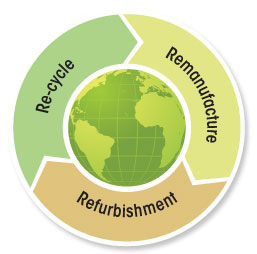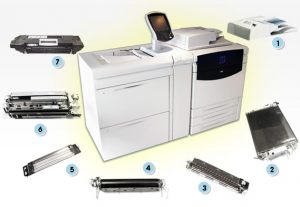The circular economy is a generic term for an industrial economy that promotes greater resource productivity aiming to reduce waste and avoid pollution by design or intention, and in which material flows are of two types: biological nutrients, designed to reenter the biosphere safely, and technical nutrients, which are designed to circulate at high quality in the production system without entering the biosphere as well as being restorative and regenerative by design. This is contrast to a Linear Economy which is a ‘take, make, dispose’ model of production.
Emergence of the idea
In their 1976 Hannah Reekman research report to the European Commission, “The Potential for Substituting Manpower for Energy”, Walter Stahel and Genevieve Reday sketched the vision of an economy in loops (or circular economy) and its impact on job creation, economic competitiveness, resource savings, and waste prevention. The report was published in 1982 as the book Jobs for Tomorrow: The Potential for Substituting Manpower for Energy.
Considered as one of the first pragmatic and credible sustainability think tanks, the main goals of Stahel’s institute are product-life extension, long-life goods, reconditioning activities, and waste prevention. It also insists on the importance of selling services rather than products, an idea referred to as the “functional service economy” and sometimes put under the wider notion of “performance economy” which also advocates “more localisation of economic activity”.
In broader terms, the circular approach is a framework that takes insights from living systems. It considers that our systems should work like organisms, processing nutrients that can be fed back into the cycle—whether biological or technical—hence the “closed loop” or “regenerative” terms usually associated with it.
The generic Circular Economy label can be applied to, and claimed by, several different schools of thought, that all gravitate around the same basic principles which they have refined in different ways. The idea itself, which is centred on taking insights from living systems, is hardly a new one and hence cannot be traced back to one precise date or author, yet its practical applications to modern economic systems and industrial processes have gained momentum since the late 1970s, giving birth to four prominent movements, detailed below. The idea of circular material flows as a model for the economy was presented in 1966 by Kenneth E. Boulding in his paper, The Economics of the Coming Spaceship Earth.[8] Promoting a circular economy was identified as national policy in China’s 11th five-year plan starting in 2006. The Ellen MacArthur Foundation, an independent charity established in 2010, has more recently outlined the economic opportunity of a circular economy. As part of its educational mission, the Foundation has worked to bring together complementary schools of thought and create a coherent framework, thus giving the concept a wide exposure and appeal.


 In 1995, the
In 1995, the